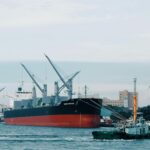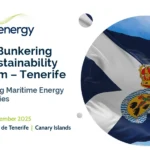Critical Undersea Infrastructure at Risk: Industry Warns of Repair Gaps in Europe’s Digital and Energy Networks

[11 August 2025] – Europe’s subsea cable infrastructure, the backbone of its digital economy and energy transition, is facing mounting risks from geopolitical tension, climate impacts, and lack of preparedness. In a joint position statement, the European Subsea Cables Association (ESCA) and the International Marine Contractors Association (IMCA) have warned that regulatory barriers, a shortage of skilled offshore workers and the lack of readily available solutions are compromising the continent’s ability to repair damaged cables.
The statement comes in response to the European Commission’s Cable Security Action Plan, which calls for improvements in prevention, detection, response, and deterrence to address threats to submarine cables. Industry leaders welcome the plan but caution that without direct collaboration between public bodies and the submarine cable industry, Europe may fall short of the resilience now urgently required.
Subsea telecommunications cables carry over 99 per cent of global intercontinental data traffic, with power cables increasing amounts of renewable power as well as sharing power between countries in Europe. Damage to this infrastructure, whether through accidental fishing, anchoring, natural hazards or other causes, can disrupt financial systems, energy flows, and digital communications in real-time. Yet, repair operations are increasingly subject to delays, not only due to capacity constraints but also to inconsistent and outdated permitting regimes across EU member states.
Telecommunications cables are currently supported by global maintenance zones and industry-led agreements, which have proven effective in enabling rapid mobilisation. However, the fleet of vessels supporting this model is ageing, with limited investment certainty.
Power cable repair is a different challenge, involving more complex operations, diverse ownership models, and limited regulatory cohesion. Vessels may be in high demand for installation projects when emergency repairs are needed, while cross-border permitting obstacles can create critical delays. Power cables are larger, much more complex and more difficult to repair than telecommunication cables, meaning the impact of delay can be more significant.

Stephen Dawe, Chairman of ESCA
Stephen Dawe, Chairman of ESCA, stated:
“Subsea cables are the invisible infrastructure of modern Europe. Industry plans resilience in system design, and governments needs to plan resilience through focussed policy. Governments and regulators must work with the industry to ensure that policy and legislation are not blockers to being able to fix subsea cables quickly when faults occur. Delays caused by policy or permitting are not acceptable in an environment where risk is increasing and resilience is paramount.”
Iain Grainger, Chief Executive of IMCA, added:
“Our sector provides the marine capability that underpins Europe’s energy and digital transitions. However, without coordinated investment and strategic support, there is a danger that capacity gaps will emerge at precisely the moment when we can least afford them. The EU Action Plan is a positive step forward. Now is the time for decisive follow-through across Member States and in partnership with industry.”
The statement identifies a clear set of measures: greater public–private investment to enhance the repair fleet and support strategic equipment reserves; national training and workforce programmes to address skills shortages and succession gaps; and urgent reform of regulatory frameworks to enable faster response times to unexpected outages.
Europe’s digital and energy systems are deeply interconnected. Recent high-profile incidents in the Baltic and North Sea have increased public awareness that vulnerabilities beneath the sea are not abstract. They are a tangible and pressing strategic concern. ESCA and IMCA stress that subsea cable resilience must be treated as a matter of national and continental importance, supported by coherent policy, coordinated response, and sustained investment.
The organisations call on European institutions and national governments to engage directly with industry to protect what they describe as “the invisible lifelines of the modern world.”
The full statement is available here.
For high-resolution images and interviews, please get in touch with
Sue Terpilowski
Sue@imageline.co.uk
Simon Ward
simon@imageline.co.uk
Vy Le.
pr@imageline.co.uk
About The International Marine Contractors Association
The International Marine Contractors Association (IMCA) is the leading trade association representing the offshore marine construction industry worldwide. With over 800 member companies in 65 countries, it represents the vast majority of global marine contractors, as well as energy companies, national regulators, and the supply chain that supports the sector. IMCA members play a key role in the offshore oil and gas and renewable energy industries through the construction and installation of offshore wind farms and hydrocarbon production facilities, together with the ongoing maintenance of these assets. IMCA’s mission is to improve safety, efficiency, and performance within the marine contracting industry. To achieve this, it works with members to develop industry-recognised technical standards and codes of practice that have become the benchmarks for safety at work across disciplines including diving, dynamic positioning, lifting and rigging, offshore survey, and remotely operated vehicles.
About the European Subsea Cables Association (ESCA)
The European Subsea Cables Association (ESCA) is the industry body representing owners and operators of submarine telecommunication and power cables in European and surrounding waters. Its membership includes national and international cable companies, marine service providers, government entities, and key stakeholders across the subsea cable ecosystem.
ESCA promotes the safe installation, protection, and maintenance of undersea cable infrastructure, which underpins global connectivity and energy transition efforts. The primary goals of the organisation are to promote subsea cable awareness and maritime safety of other sea users operating vessels in the vicinity of subsea cables.
Through collaboration with governments, regulators, and other marine users, ESCA works to ensure that subsea cables are considered in marine planning and policy. The association provides a forum for knowledge sharing and best practice across technical, environmental, and regulatory topics affecting the subsea cable sector.
Maintenance Agreements for Submarine Telecommunications Cables
To support rapid fault response, the world’s seabed is divided into regional maintenance zones, governed by commercial agreements that allow cable owners to share access to dedicated repair vessels 24/7/365 and strategically stored spare parts. This approach enables swift mobilisation following cable faults, reducing downtime and service disruption.
In Europe, two long-standing examples are:
- Atlantic Cable Maintenance Agreement (ACMA) – covering the North Atlantic and surrounding areas https://www.acma2017.com/
- Mediterranean Cable Maintenance Agreement (MECMA) – focused on the Mediterranean region
These consortia coordinate operational readiness, vessel scheduling, and logistical support, allowing repairs to be carried out in days rather than weeks. Similar zone agreements operate in other parts of the world, forming a global system of cooperation across the subsea telecoms sector.
Alongside these regional models, private maintenance agreements – such as the Atlantic Private Maintenance Agreement (APMA) in Europe – offer bespoke coverage for specific cable networks. Additional regional providers also operate in smaller seas, such as the Baltic, where more localised maintenance services are in place.
This zone-based system has underpinned the reliability of the international telecoms network for decades, helping to maintain global internet and voice connectivity in the face of natural events or accidental damage.
By contrast, the submarine power cable sector – particularly in offshore wind and interconnector projects – has yet to adopt equally mature or coordinated maintenance frameworks. Emergency repairs in this sector often face longer lead times and higher logistical complexity, prompting increasing calls for focussed strategies for power cable repair.















